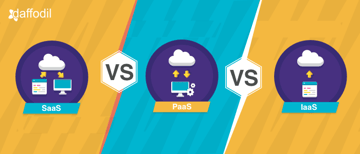
Modern software development involves a lot of complexities. Thus, programmers are burdened with performance, security, user privacy, scalability concerns and are in need of an approach that can help them focus on applications than infrastructure.
Serverless architecture, the buzzword in the software development industry is trying to do just that for the programmers!
What exactly is serverless architecture? How programmers and businesses are going to benefit from it? How this technology is utilized at its best and how your business can get started with it. The later segment has the answer to all the serverless architecture-related queries.
What is Serverless Architecture?
A serverless architecture is a way to build applications without having to manage the infrastructure. The application runs on servers but the server is managed by a cloud service provider. That means, the engineering team is freed from the responsibility to provision, scale, and maintain servers to manage applications, databases, and storage systems.
Introducing such technology to the software development cycle ensures that developers focus more on their core product instead of putting their efforts into managing and operating the servers or runtimes.
Benefits of Serverless Architecture
No Server Management: As the name suggests, serverless architecture does not require the engineering or IT team to worry about server management. The servers, databases, and storage systems are taken care of by the cloud service provider. That’s how the serverless architecture is claimed to offer peace of mind to developers so that focus on development instead of infrastructure.
Flexible Scaling: One of the major drivers of serverless architecture adoption is it allows an application to scale-up or scale-down the resources as the requirement strikes. Just consider this: You’re launching an app with a new idea.
If it grows and does wonders, you don’t have to work on expanding the existing resources. They will automatically expand when traffic inflates or other services need access to more resources.
On the contrary, if the app does not work as expected, you can save on CapEx and OpEx cost. Since the resources automatically expand on the requirement, you don’t have to invest in resources beforehand, which usually leads to increased CapEx and OpEx.
Optimized Cost: Serverless architecture helps optimize the cost in a number of ways. Example,
- Serverless follow pay-as-you-go models which ensures that you only pay for the services availed and as per their usage
- Since infrastructure management is completely outsourced, the engineering team can pay attention to more productive tasks related to the development
Automated High Availability: When you opt for serverless architecture, it gives you built-in availability and fault tolerance. There is no need to design an architect with these capabilities since the services running the application have it by default.
Other than this, speed of development, improved application performance, security (Vulnerability Mang. and Compliance), flexibility in team responsibilities are some of the advantages of opting for serverless architecture for software development.
Serverless Architecture: Success Stories
Localytics
Localytics is a web and mobile app analytics solution that is used in more than 37,000 apps in more than 3 billion devices worldwide. Major brands such as Salesforce, ESPN use the software to understand how apps are performance and to engage with new and existing customers.
Challenge:
The applications running Localytics upload billions of data points to the database every day. The engineering team needs to access subsets of data for creating new services. This process requires capacity planning, infrastructure management, and utilization monitoring. The platform team at Localytics thus wanted to enable self-service for engineering teams.
Solution:
To work around the problem, Localytics sends the data sets through Elastic Load Balancing to Amazon Simple Queue Service, then to Amazon Elastic Compute Cloud, and finally into an Amazon Kinesis stream. The data sets are put into a Kinesis stream which is then used by different microservices teams to build Lambda microservices, without having to notify the analytics team. | Source: AWS
Benefits:
- Decouples the efforts of platform and engineering team
- Speeds up time-to-market as each microservices runs and scale independently
- AWS Lambda automatically scales to process the data
- Eliminates the need for infrastructure management to run the microservice
The Seattle Times
The Seattle Times is the biggest news media business serving the Pacific Northwest. Its online presence as Seattletimes.com has 7 million unique visitors a month.
Challenge:
The Seattle Times had its website published to a content management system. While it was initially utilized managed hosting services, it acknowledged the flexibility and agility challenges in exchange for less maintenance responsibility. Moreover, the hosted platform struggled to manage the fluctuating load and thus the Seattle Times was restricted to scale up according to customer demand.
Solution:
The Seattle Times switched to AWS for managed hosting services and utilized its services to overcome scalability challenges. For example, its official website Seattletimes.com is hosted in an Amazon Virtual Private Cloud (Amazon VPC), also known as a logically isolated section of the AWS cloud. Other services that are being utilized to improve scalability include, but are not limited to Amazon Elastic Block for persistent block-level storage volumes, Amazon S3 for a redundant infrastructure to store and retrieve data, AWS Lambda for resizing images on different devices, etc.| Source: AWS
Benefits:
- By utilizing the serverless architecture, The Seattle Times can automatically scale-up to deal with traffic spikes when big stories break and scale down accordingly to reduce costs.
- Easy resizing of news images for different environments that allows breaking news stories to reach the readers faster.
- Since there is complete control over the backend environment, troubleshooting can be done as soon as the problem is recognized.
Software Development using Serverless Architecture
Serverless architecture certainly comes with a number of advantages. However, getting started with it might put forth some challenges. Which cloud service provider to choose, what services will work best according to your application, how multi-cloud enablement can help your business etc.
Need answer for all your serverless architecture-related queries? Set up a free consultation with our cloud experts who will understand your business idea and make the best recommendations possible.



